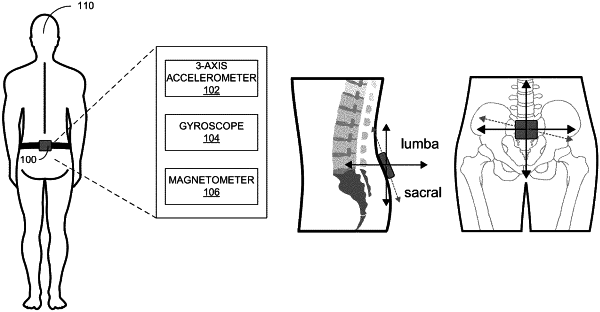| CPC G01P 13/00 (2013.01) [A61B 5/1114 (2013.01); A61B 5/1126 (2013.01); A61B 5/4866 (2013.01); A61B 5/6823 (2013.01); A61B 5/7257 (2013.01); A61B 5/7278 (2013.01); G01P 15/08 (2013.01); G01P 15/14 (2013.01); G01P 15/18 (2013.01); G06V 40/25 (2022.01); A61B 5/1117 (2013.01); A61B 2562/0219 (2013.01); A61B 2562/0223 (2013.01)] | 20 Claims |

|
1. A method for analyzing a motion of a human user, the method comprising:
attaching at least one motion sensor substantially near a lower back of the human user;
performing a motion measurement on the human user using the at least one motion sensor;
obtaining, by a computer over a wired or wireless interface associated with the at least one motion sensor, movement data of the human user over a time interval from the at least one motion sensor;
computing, over the time interval, a distribution of energy as a function of time associated with the motion based on the obtained movement data;
identifying energy peaks based on the distribution of the energy over the time interval;
determining an occurrence frequency of an energy peak having a unique energy value;
computing an energy-occurrence-frequency distribution as a function of energy based on the determined occurrence frequencies of energy peaks within a predetermined energy range;
determining a level of stability associated with the human user based on the computed energy-occurrence-frequency distribution; and
presenting, on a display associate with the computer, the determined level of stability to the human user.
|